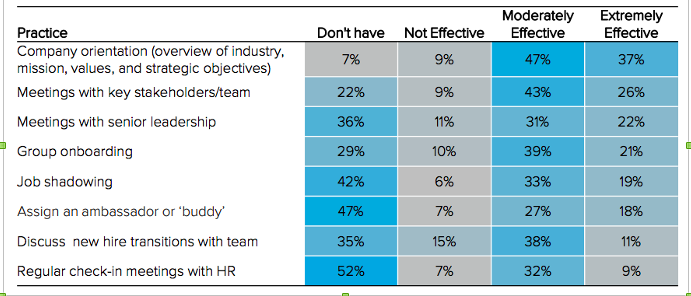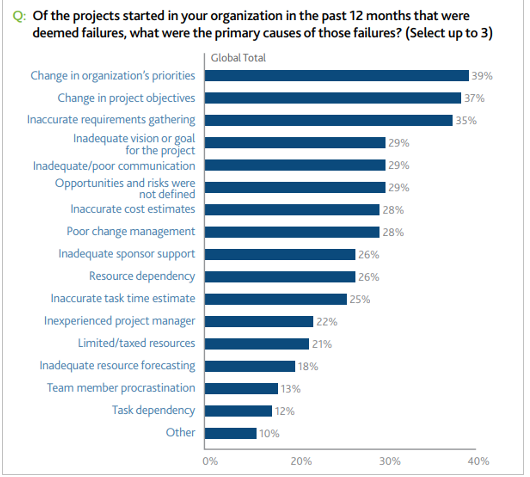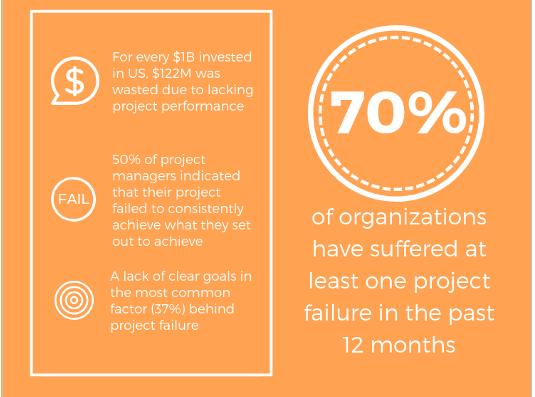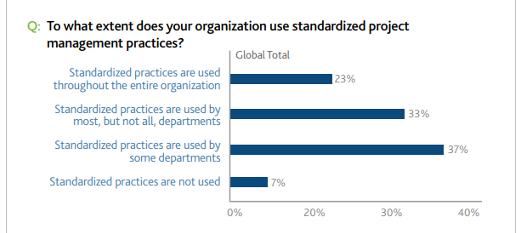Project management is a messy business. As a small business owner, you likely find yourself putting out fire after fire without any time to strategize and accomplish the goals you initially set out. Unfortunately, that sporadic management process not only leads to personal stress-level elevations, it also roadblocks the overall success of your business.
Sometimes, though, project management mistakes aren’t apparent. To find the gaps in your business, you need to take a step back, analyze your processes, and remedy any faults that you find. The following are ten of the most common project management mistakes you may discover. We take a look at how they could surface and provide tips on fixing them (and preventing them) as well.
1. Unclear Goals
Setting unclear goals is one of the most detrimental project management mistakes you can make. Confusion among employees about objectives leads to miscommunication and an environment of continual head-butting. When employees misunderstand a project’s goal, they often perform unsuitable work that doesn’t follow the mission you have in place.
If your business is experiencing this issue, you’re not alone. A Geneca study of 600 business and IT professionals found that only about half of all respondents had a clear understanding of their business objectives. Even worse, 78 percent of those professionals stated that their project’s goals usually don’t align with the purpose of the company.
With unclear or misaligned goals, your projects are dead before they begin.
Solution: Instead of passing down objectives to your team, work with them to establish goals. Make sure the goals are transparent, understandable, and align with your overall business strategy. There should be no confusion as to the objectives you’re working to accomplish.
2. Poor Communication
It’s a tale as old as time. Poor (or even worse, no) communication has plagued every business at one point in time or another. Whether it’s missing communication tools, groupthink, a fear of speaking out, or siloed work environments – the causes of this issue are nearly endless.
Communication is a vital part of project success. So it shouldn’t surprise you that ineffective communication hurts a project’s success over 50 percent of the time. Don’t let your business become part of the statistic.
Solution: Foster an environment of open dialog, transparent communication, and constructive criticism. Employees need to feel comfortable speaking their mind and asking questions in a productive way.
If you don’t already utilize a project management tool, implement one. Several are available that provide helpful functionality such as task delegation, team chat threads, document sharing, goal setting, and scheduling, among several other features. They’re vital in getting everyone on the same page.
3. Unsatisfactory Onboarding
After interviewing for the job, an employee’s onboarding is the first experience (s)he has with your business. If this experience is less than stellar, it could significantly affect the success of the projects on which they work.
The longer it takes for a newly-hired employee to become a contributing team member, the more significant the risk of missing deadlines for the projects with which (s)he’s involved.
Solution: As part of the onboarding process, pair up new hires with veteran employees to help them get settled and answer any questions they have. A Human Capital Institute (HCI) survey discovered that 87 percent of companies who instituted a buddy/mentor program experienced a reduced time for new employees to reach proficiency.

Orientation, team meetings, and one-on-ones with senior leadership also help reduce employee onboarding time. | Source: Human Capital Institute
The chart above provides some additional strategies. Check-in meetings, orientations, and job shadowing all give new employees the knowledge they need to contribute effectively.
4. Constant Re-Prioritization
As a project manager, the ability to adapt to the changing business landscape is vital. However, continuously shifting your team’s priorities to reflect those changes is likely having the opposite effect of what you’d like.

A change in priorities/objectives represent the two most popular reasons that a project fails. | Source: Workamajig
When you pivot priorities partway through a project, employees are left wondering about the purpose of their work up to that point. Multiple re-prioritizations tend to discourage team members and chip away at their motivation.
Solution: Take additional time up-front to ensure that the objectives you set are genuinely the ones you should be striving towards. Taking an extra day or two to solidify your strategy today could save you weeks of unusable work later.
Once you kick off a project, see it through to the end. It may be difficult to ignore the attraction to a shiny, new objective. But it’s necessary if you want to keep your team satisfied.
5. Lack of Delegation
Delegating tasks, especially as a small business owner, can be difficult. But trying to do everything yourself has definite disadvantages.
Employees with minimal tasks and responsibilities feel less motivated in their work and leave jobs at a faster rate than their peers. Because current employees are, on average, more productive than new hires, projects (and your business) suffer in this scenario.
The most impactful drawback to poor delegation, though, is owner burnout. A Xero survey found that over three-fourths of all small business owners feel burnout at some point while they’re working. So, even if you don’t feel thinly stretched yet, the odds predict you will soon – unless you focus on delegation.
Solution: Trust your employees; you hired them for a reason. If you’re worried about the quality of tasks you aren’t completing yourself, you have a couple of options to help put your mind at ease.
A simple solution is starting employees out on a probationary period with new tasks. Another option is to have them shadow you for some time, say a week, and slowly transition responsibility to them over time. You could even combine both mechanisms.
Once you’ve passed the reins, however, remember that the task is no longer your responsibility. Give the employee the necessary space to work. Which brings us to our next project management mistake…
6. Micromanagement
Even if you solve your delegation issues, you may still run into another problem – micromanagement. The ability to effectively dole out tasks to employees is one skillset; not hovering over their shoulder while they perform them is something entirely else. Often, managers who have trouble delegating also find themselves struggling with micromanagement after the fact.
When you micromanage, you strip away the autonomy that employees need to complete their work effectively. The downsides are no different from those that a lack of delegation causes – decreased motivation and increased employee turnover.
Solution: Again, trust your employees. If you don’t have faith that they can handle the responsibility, you probably shouldn’t have hired them in the first place.
Rather than overtaking a project when an employee makes a mistake, use it as a learning opportunity for everyone. The more you view mistakes as a chance to teach employees something new, the better off your business will be.
7. Inaccurate Budgeting
You could have the most efficient team in the world. But, if you don’t produce accurate budgets, you’ll always end up in a losing scenario. On average, projects wind up going over their budget by 27 percent, and one in every six projects will overspend by at least 200 percent. For most teams, those overages are considered failures.
Simply put, going over budget creates undue stress on your team, yourself, and the business as a whole.

Project management mistakes plague almost every organization. | Source: Hive
But you shouldn’t only worry about the accuracy of your fund budgets. Underestimating the time you need to complete a project could do just as much harm. Setting impossible to reach deadlines causes teams to cut corners, rush quality checks, and create workarounds all for the sake of finishing before the deadline.
Solution: Creating accurate budgets is a skill that takes years to cultivate. Keep diligent records of your past budgets, whether you were under or over, and the reasons why. Over time, you’ll begin to see patterns and future budgets should become more accurate. It’s also wise to include a buffer when budgeting funds and timelines to account for any unexpected expenses.
If you have the cash, it may be worthwhile to hire someone who specializes in budgets to at least review your work as well.
8. Failure to Plan
This mistake may seem like an obvious one to avoid, but planning involves much more than setting up a project Gantt chart. Project management planning is a continuous process, involving the creation of objectives, deadline setting, budgeting, task delegation, prioritization, and people management, among several other activities. It’s effectively a culmination of much of this list.
Failing to think through any one of these activities could potentially disrupt your project, your business, or both.
Solution: As a business owner, you need to schedule time to work through your overall business strategy. It’s vital that part of this working session includes the activities we’ve outlined above. Once again, project management tools help immensely with this process.
But that’s not all. You should also create contingency plans in the event that an unexpected problem arises. They always do.
9. Unestablished Procedures
Onboarding, communication, delegation – unestablished business processes affect them all. Without comprehensive procedures in place, employees spend an unnecessary amount of time figuring out how to accomplish even the most menial of tasks.

Most organizations don’t implement standardized processes across departments. | Source: Workamajig
While tribal knowledge (e.g., non-written procedures) works fine for small teams, larger organizations need written documentation to which members can always look back and reference. Otherwise, employees get stuck in a game of telephone in which they must rely on solely their memories and the memory of their peers.
Solution: Thoroughly document all of your processes. Your team should know your procedures so well, it’s like they’re on autopilot when they work.
Besides improving the productivity of current employees, establishing and documenting procedures also assists the onboarding process. It gives new hires a constant resource that they can reference without having to interrupt the work of those around them.
10. Scope Creep
Scope creep – the project management mistake that every manager fears, yet few seem to avoid. Scope creep is an inadvertent process in which you slowly add tasks to a project as your team is working on it. While it may be necessary to sparingly add action items to adapt to changes in business requirements, many organizations overdo these additions.
Scope creep demoralizes teams because it effectively moves the goalposts for a successful project. Team members feel as if they’ll never accomplish the goals they set at the start. Like re-prioritization, scope creep prevents teams from getting into a productive project flow as well. Scope expansions inevitably cause shifting priorities, leading to a distracted team.
Solution: Whenever you plan to expand a project’s scope, take additional time to analyze whether the addition is necessary. If you can wait to include it on the next project you kick off, you should do just that. You’ll have a better motivated team that’s accomplishing more than it would have otherwise.
Improving Your Project Management Aptitude
Fixing these project management mistakes isn’t a one-day process. And some project management problems that don’t exist now will likely pop up sometime in the future.
Similar to building your overall business acumen, remedying project management mistakes is an ongoing process. As long as you continuously work to prevent (or remedy) the problems in this list, your business will continue to thrive.





